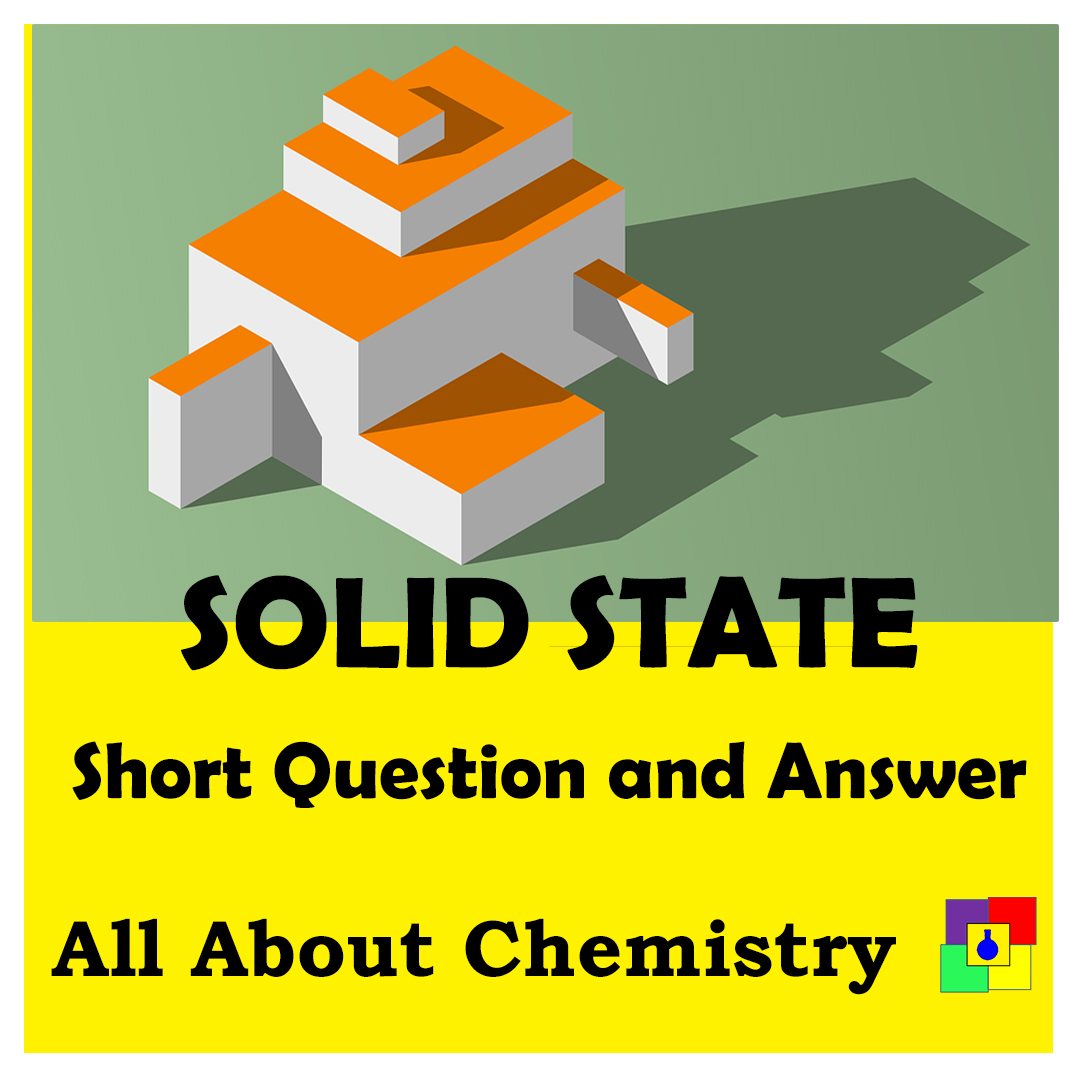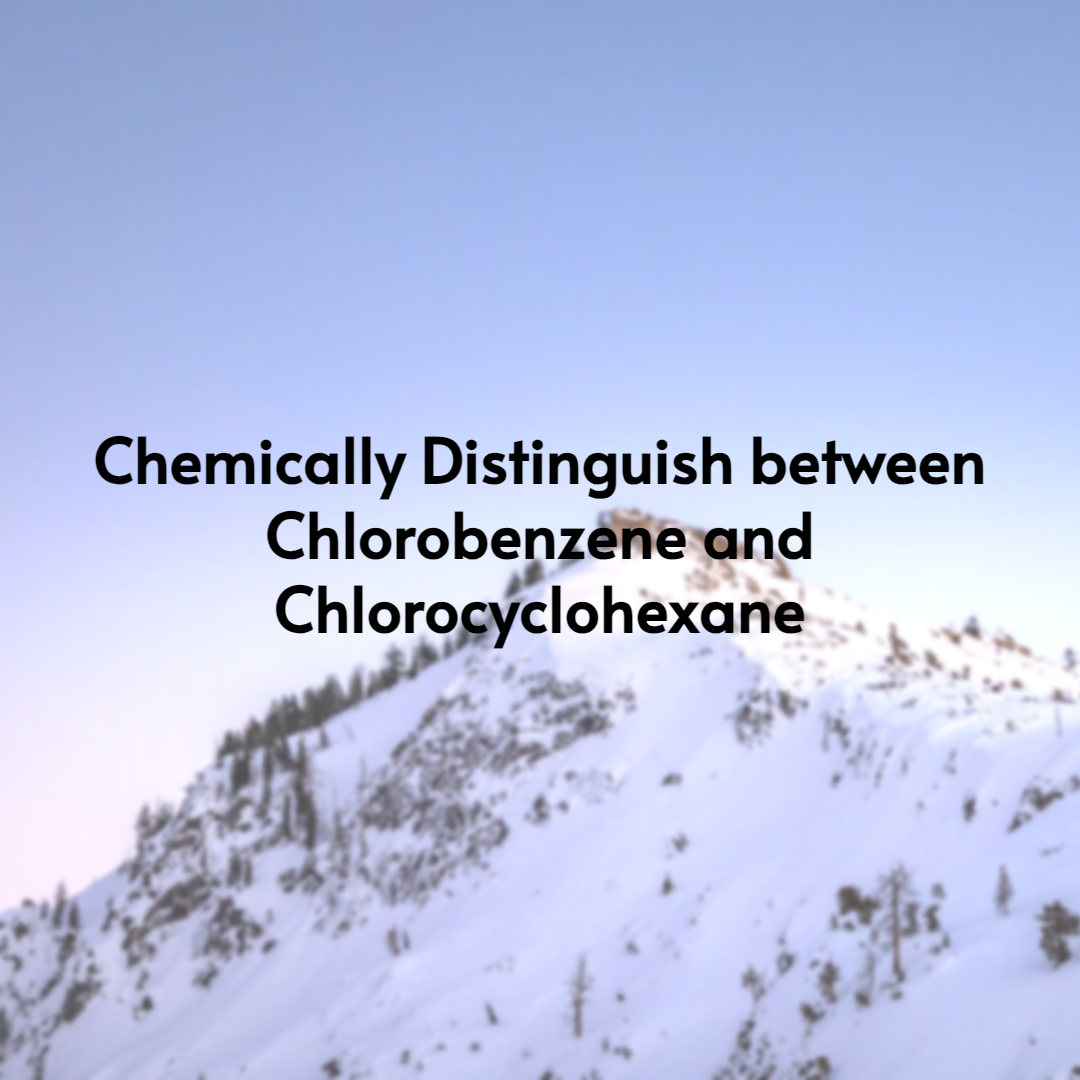Few Short Questions and Answers from Solid States which are very important for CBSE and ISC Exams. Students are also suggested to complete the theory portion of this chapter. (CLICK)
You may also go through the MCQ Test of this chapter(CLICK) and Practice Set(CLICK).
- Why is glass considered a super cooled liquid?
Ans: Like liquids, glass has a tendency to flow, though very slowly. It is the reason that the glass panes in the windows or doors of old buildings are found to be milky (thicker) at the bottom.
- Solid A is a very hard, electrical insulator in solid as well as molten state and melts at extremely high temperatures. What type of solid is it?
Ans: Covalent (network solid) like diamond, SiO2 (quartz) or SiC.
- What type of defect can arise when a solid is heated? Which physical property is affected by it and in what way?
Ans: On heating, some atoms or ions leave the lattice site completely. Thus, a vacancy defect is produced. The density of the substance decreases because some atoms or ions leave the crystal.
- What type of stoichiometric defect is shown by:(I) ZnS, (II) AgBr?
Ans: (I) ZnS shows Frenkel defect. It is because the difference in the size of cation and anion is large.
(II) AgBr shows Frankel as well as Schottky defects.
- Explain how vacancies are introduced in an ionic solid when a cation of higher valence is added as an impurity in it?
Ans: Two or more cations of lower valence are replaced by a cation of higher valence. It is to maintain electrical neutrality. Therefore, some cation vacancies are produced. If in ionic solid Na+Cl– an impurity of SrCl2 is added, two Na+ ions are replaced by one Sr2+ ion. One Na+ lattice site will remain vacant.
- Ionic solids, which have anionic vacancies due to metal excess defect, develop color. Explain with the help of a suitable example.
Ans: When a sodium chloride crystal is heated in the presence of sodium vapour, some chloride ions leave the lattice and combine with sodium to form NaCl. For this reason, Na-atoms lose electron to form Na+ ions (Na→Na+ + e–). The release electrons occupy the anion vacancies produced by Cl– ions. Now the crystal has excess has sodium ion. The holes occupied by electrons are called colour centres or F-centres. They absorb energy from visible light and get excited. They impart a yellow colour to NaCl crystal. Read metal excess defeat.
- A group 14 element is to be converted into n-type semiconductor by doping it with a suitable impurity. To which group should this impurity belong?
Ans: It should be droped with a group 15 element. It will produce negatively charged electrons for conduction.
- What type of substance would make better permanent magnets, ferromagnetic or ferromagnetic? Justify your answer.
Ans: Ferromagnetic substances make better permanent magnets. It is because the metal ions in these substances are grouped into small regions called domains. Each domain acts as a magnet. These domains are randomly oriented. When ferromagnetic substances are placed in a magnetic field, all the domains get oriented in the direction of the magnetic field producing a strong magnetic field. When the magnetic field is removed, the ordered domains still remain and become permanent magnet.
- Classify each of the following as being either a p-type or a n-type semiconductor:
- (I) Ge doped with In (II) B doped with Si
Ans: (I) Ge is group 14 element and In is group 13 element. Hence an electron deficit hole is created and therefore, it is p-type.
(II) B is group 13 element and Si is group 14 element, there will be a free electron. Hence, it is n-type.
- The ions of NaF and MgO all have the same number of electrons and internuclear distances are about the same (235 pm and 215 pm). Why then are the melting points of NaF and MgO so different (9920C and 26420C)?
Ans: In Mg2+ O2-, the forces of attraction are stronger because each ion carries two units of charge whereas in Na2+ F– each ion carries one unit charge. Due to stronger electrostatic forces of attraction, m.p. of MgO is higher than that of NaF.
- Do all the metals have close packed structure?
Ans: No. hcc and ccp are close-packed structure with packing fraction=0.74. bcc is not a close packed structure because its packing fraction is 0.68.
- Why FeO and NiOare non-stoichiometric compounds? They have the formula Fe0.95 O and Ni0.98O.
Ans: In FeO, some Fe2+ ions are replaced by Fe3+ ions. In NiO, some Ni2+ ions are replaced by Ni3+ ions. To maintain the electrical neutrality 3M2+=2M3+.
- Why common salt is sometimes yellow instead of being pure white? What makes alkali metal halide sometime colored, Which are otherwise colorless?
Ans: This is due to the presence of electrons in some lattice sites in place of anions. These sites act as F-centres and are responsible for the colour, (Read in non-stoichiometric point defects).
- Name one solid which has both Schottky and Frankel defects.
Ans: Silver bromide (AgBr).
- Why stoichiometric defects are also called intrinsic defects?
Ans: Because they do not alter the stoichiometry of the crystal (Schottky defect and Frankel defect).
- What is the difference in the semiconductors obtained by doping silicon with Al or with P?
Ans: Silicon doped with Al produces p-type semiconductors. The conduction is due to the creation of +ve holes. Silicon doped with P produces n-type semiconductors. The conduction is due to extra electrons carrying –ve charge.
- Why do the window glass of old buildings look milky and thick at the bottom?
Ans: Glass is a supper cooled liquid. It has the property to flow.
- What happens when a ferromagnetic, ferromagnetic and anti-ferromagnetic solid is heated?
Ans: All ferromagnetic, anti-ferromagnetic and ferromagnetic substances become paramagnetic at higher temperature due to randomization of spins of electrons.
- Zinc oxide is white but turns yellow on heating, explain.
Ans: On heating, ZnO loses oxyzen and gives Zn2+ ions and electrons.
ZnO→Zn2+ + ½ O2 + 2e–
The Zn2+ ions get entrapped into interstitial sites. The electrons get entrapped in the neighboring interstitial sites. These sites act at F-centres and are responsible for yellow colour.
- Mention one property which is caused due to the presence of F-centre in a solid.
Ans: F-centre is responsible for the colour and paramagnetic behavior of the solid.
- How can a material be made amorphous?
Ans: By melting a material and then cooling it rapidly.
- At what temperature ferrimagneticsubstance change into paramagnetic?
Ans: 850 K
- Name the salt that can be added to AgCl to produce cation vacancies.
Ans: CdCl2
- At what temperature range most of the metals become superconductors?
Ans: 2 K-5 K
- Why does zinc oxide exhibit enhanced electrical conductivity on heating?
Ans: When ZnO is heated, it loses oxygen.
ZnO → Zn2+ + ½ O2 + 2e–
Zn2+ ions and electrons are trapped in interstitial sites. The trapped electrons increase the conductance.
- What type of interactions hold the molecules together in polar molecular solid?
Ans: Dipole-dipole interactions.
- Which point defect in crystals of a solid: (a) does not change the density (b) increases the density?
Ans: (a) Frankel defect, (b) Interstitial defect.
- What are the coordination numbers of each ion present in cubic closed packed structures of CaF2?
Ans: Ca2+:F–=8:4
- What type of crystal defect is produced when NaCl is doped with MgCl2?
Ans:Cation vacancy.
- Why the conductivity of metals decreases with the rise in temperature?
Ans: The kernel begins to vibrate in the path of the flow of electrons. It creates mechanical hindrance in the flow of electrons. This decreases the conductivity of metals.
- Why Frenkel defect is not found in the halides of alkali metals?
Ans: The ions of alkali metals are large in size and cannot be accompanied in interstitial spaces.
- Why does pure silicon which is an insulator behave as semiconductor on heating?
Ans:On heating many covalent bonds break up. Free electrons formed conduct electricity.
- What is doping?
Ans: The addition of a small amount of foreign impurity in the host crystal. It increases the electrical conductivity.
- Name some compounds which are ferroelectric as well as piezoelectric in nature.
Ans: Barium titanate(BaTiO3) and potassium hydrogen phosphate.
- Compare hcp,ccp and bcc.
| Property | Hcp | Ccp | Bcc |
| Packing | Closed | Closed | Not closed |
| Type | ABABAB | ABCABCABC | ABAB |
| Space occupied | 74% | 74% | 68% |
| Coordination No | 12 | 12 | 8 |










